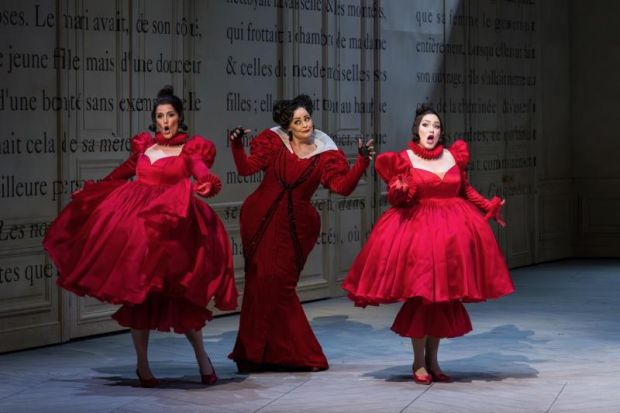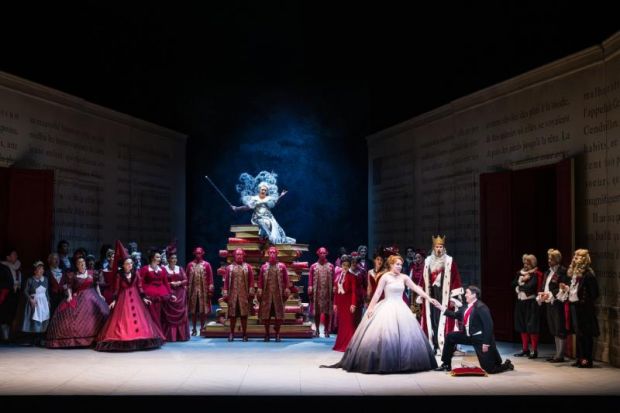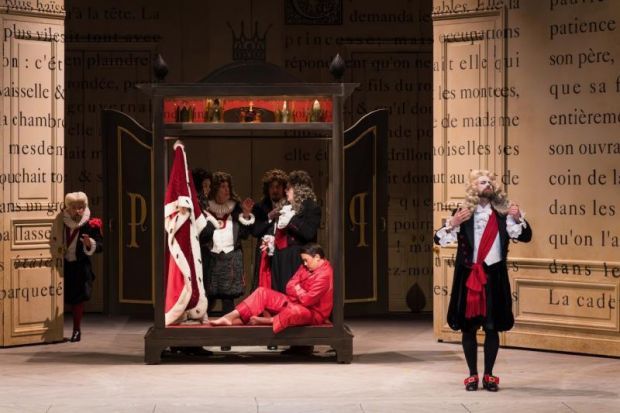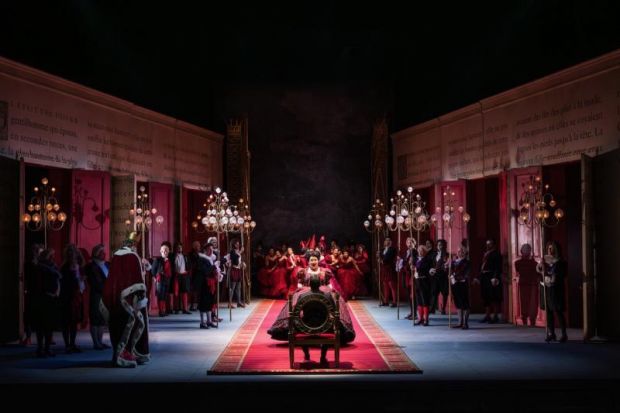Cinderella (Cendrillon)
This production is an excellent way to introduce young people and those new to opera to the artform, as the ninety-minute accessible performance is a chocolate box of costume and choreographic delights.
Originally staged in full at the New York Metropolitan Opera Company this version is a cutdown edition in English. A glance at the sub-titles is still required on occasions to understand all the lyrics but is made fun because of the wit of the translation, and easy to follow because the narrative is so familiar.
The look of the production was inspired by a big red story book of Cinderella from the director’s childhood. Pages from the book are the stage set – which open and fold out during the four acts.

It opens with the household preparing for the ball. The deliciously ghastly stepmother Madame de la Haltière (Angela Hogan) instructs her ridiculously looking inflated bottomed daughters Noémie (Jennifer Black) and Dorothée (Ashlyn Tymms) on how they should catch the Prince. Whenever this trio was in action the result was barrels of mirth.
Once they leave for the ball, we enjoyed the entrance of Cinderella (Emily Edmonds) a local singer making her debut in a lead role with Opera Australia after scoring meaty roles in Europe and the US.
After she falls asleep the Fairy Godmother (Emma Matthews) floated in a pile of books making a welcome return to the company for the first time in eight years - sparkling on her top notes.

Cinderella is taken to the ball in a minimalistic carriage pulled by dancers in horses heads.
A tradition of Opera at the time was for male romantic leads to be portrayed by women in a fashion called trousering. In this case the Prince Charming is played by the splendid Margaret Plumber.
The Prince is portrayed as a brat who had to be forced to attend the ball by the King. He rejects a procession of hilariously awkward prospective princesses and falls in love with Cinderella with one look, before he has even spoken to her.

Doors are closed by the prince to stop people peering in when he takes Cinderella to a room to get to know her.
In this edited version some of the passion of the original full-length opera is lost. More interesting interpretations of the romance are around in other recent musical versions of the legend.
We also don’t see the glass slipper being left at the ball, but are told it happens.
I found the most endearing song to be a duet between Cinderella and her father longing for their former simpler life together.

Before little ones get too restless a scrumptious line of women try to squeeze into the abandoned glass slipper – with dancers fencing with feet in their air - until the shoe finally fits you know who.
The rousing orchestra and chorus aid the celebration of the happy ending.
David Spicer
Photographer: Rhiannon Hopley.
Subscribe to our E-Newsletter, buy our latest print edition or find a Performing Arts book at Book Nook.

